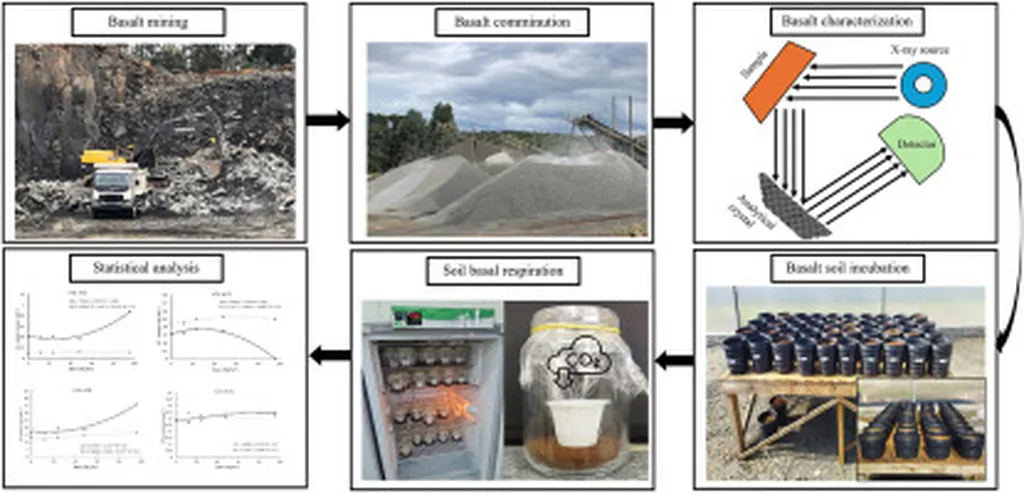In the heart of Brazil’s agricultural landscape, a novel solution to soil fertility is emerging, one that could redefine sustainable farming practices and offer a commercial boon to the energy sector. A recent study published in *Discover Geoscience* (translated from Portuguese as *Discover Geoscience*), led by Emanuélle Soares Cardozo from the Graduate Program in Environmental Sciences at the Federal University of Pelotas (UFPel), has uncovered the potential of andesitic basalt rock powder as an effective and eco-friendly soil remineralizer.
Brazil’s soils, while rich, are under constant threat from intensive agriculture and natural weathering, leading to a gradual decline in fertility. Conventional fertilizers, often imported, not only strain smallholder farmers’ resources but also pose significant environmental risks. Enter soil remineralization, a technique that involves adding ground rock to supply essential macro- and micronutrients. This method gained traction in Brazil following Law No. 12,890/2013, which categorized remineralizers as agricultural inputs, and was further bolstered by Normative Instruction No. 5/2016, setting technical criteria for commercialization.
Cardozo’s study focused on assessing the geological viability and efficiency of ground andesitic basalt, abundant in southern Brazil, as a soil remineralizer. The research involved mineralogical and geochemical characterizations, along with a leaching test to evaluate nutrient availability. The findings were promising: the basalt contained over 15% of total base-forming oxides (K₂O, MgO, and CaO), with potassium oxide (K₂O) exceeding 1%, and lacked significant concentrations of potentially toxic elements like arsenic, cadmium, mercury, and lead, thus complying with current legislation.
“The geochemical analysis showed that this lithology meets all the requirements set by the legislation,” Cardozo explained. “Moreover, the leaching test demonstrated the release of substantial amounts of calcium, magnesium, and potassium under simulated acidic soil conditions.”
The leaching test, using a 2% citric acid solution, revealed the release of 36.25 mg/L of calcium, 24.95 mg/L of magnesium, and 12.06 mg/L of potassium, confirming nutrient availability. These results underscore the potential of andesitic basalt as a viable and sustainable alternative to conventional fertilizers.
The commercial implications for the energy sector are significant. The extraction and processing of andesitic basalt could open new avenues for economic growth, particularly in regions rich in this lithology. Local mining operations could benefit from increased demand, while the agricultural sector could see reduced dependency on imported fertilizers, leading to cost savings and enhanced food security.
“This research not only highlights the geological viability of andesitic basalt but also paves the way for further field studies to validate these findings on a larger scale,” Cardozo added. “The potential impact on sustainable agriculture and the energy sector is immense.”
As the world grapples with the challenges of sustainable development, this study offers a glimmer of hope. By harnessing the power of andesitic basalt, we could be on the cusp of a new era in agriculture—one that is both environmentally friendly and economically viable. The journey from laboratory to field is just beginning, but the promise is clear: a future where soil fertility and environmental sustainability go hand in hand.

